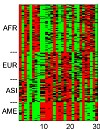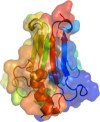
My wife’s mother is very keen to trace her family tree and has dug up roots as far back as the early 18th century with possible hints at some ancestors dating back to the late 1600s. She has quite a rare and locally focused maiden name, so it has been a little easier for her than it would be for someone in England called Smith. Personally, I gave up any notion of trying to find my ancestors as my name, while not incredibly common is not rare, meaning as it does “broad field” and so is quite widespread in its various forms.
However, a group of computer scientists, mathematicians, and biologists from around the world have developed a new computer algorithm that could help anyone trace their genetic ancestry in minutes without any prior knowledge of their background. This will not, of course, help you find great, great, great grandfather Bartholemew or whoever, but it could provide important insights into your genetic heritage and the true origins of your germ line.
The new program is unique in that it searches for specific DNA markers, single nucleotide polymorphisms, or SNPs (pronounced snips), using nothing more than a DNA DNA sample collected by simple cheek swab. The researchers, led by Petros Drineas of Rensselaer Polytechnic Institute, New York, used genetic data from previous studies to perform and confirm their research, including the new HapMap database, which scientists are using to find variations in the human genome.
“The program will be a valuable tool for understanding our genetic ancestry and targeting drugs and other medical treatments because it might be possible that these can affect people of different ancestry in very different ways,” explains Drineas. The program will also help us understand our unique backgrounds and assist historians and anthropologists in studying the origins of different populations as well as how our global society evolved.
So, while it may not help mother-in-law find her great, great, great, great grandfather and add the final twigs to her individual family tree, the new program (details in Plos Genetics) could lead to a wider understanding our wider genetic heritage, which could lead to the keenly sought personalized medicine. If researchers can uncover the minute genetic details that set each of us apart, biomedical research and treatments can be better customized for each individual, Drineas adds.



